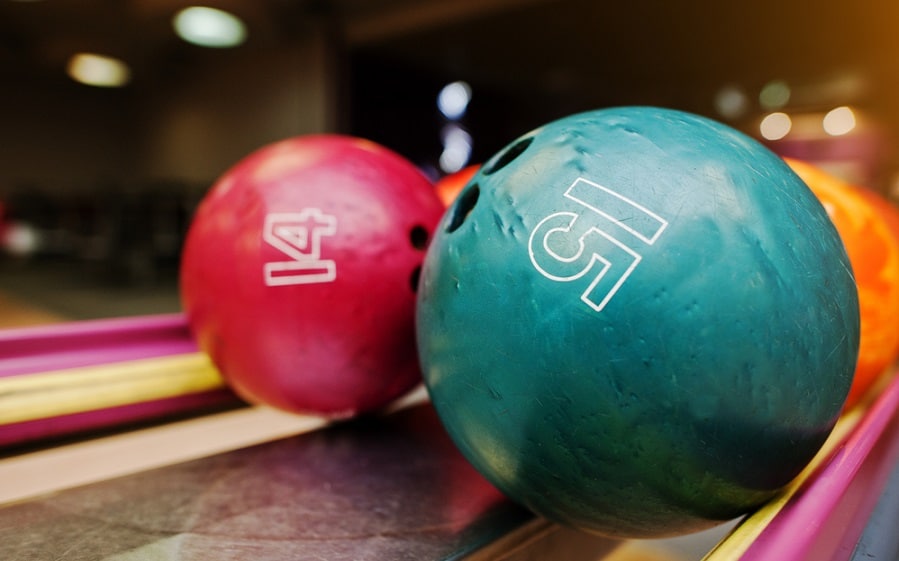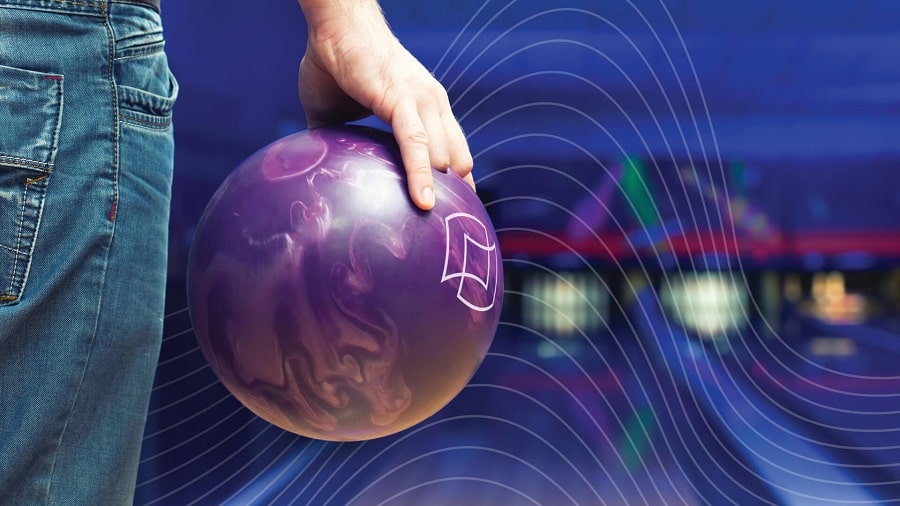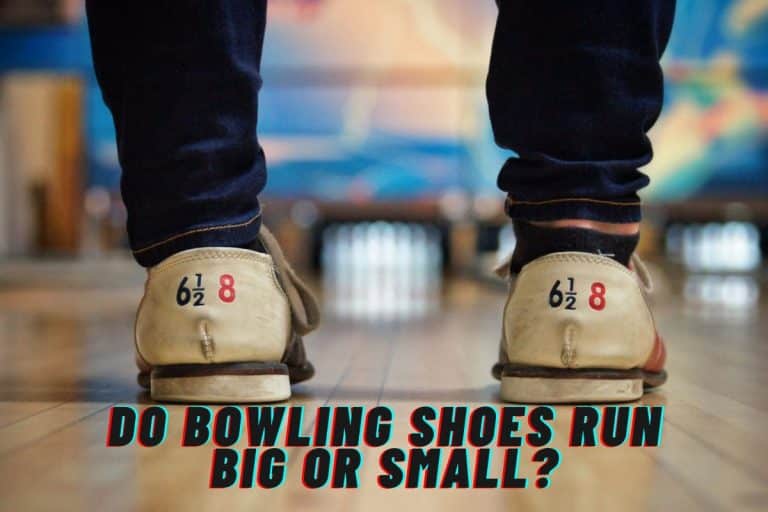What Size Bowling Ball Should I Use? Heavier or Lighter?
When choosing a bowling ball, ball weight is a very crucial factor you need to consider because it can significantly affect your bowling performance. If your main issue as a beginner in bowling has been what size bowling ball you should use, this article is for you!
What size bowling ball should I use? Bowling balls come in different sizes and weights. As a bowler, you must practice with varying bowling balls to know the best bowling ball weight for you. The heaviest bowling ball weighs 16 pounds, and usually, it’s assumed that the bowling ball you choose to use should be ten percent of your body weight.
This post discusses the recommended ball weight for seniors, kids, and pro bowlers and the benefits of using light and heavy bowling ball weights in detail. So, dig right in for more information!
The Recommended Bowling Ball Weight for seniors.

Bowlers over 60 should choose a ball that is not too heavy to avoid injury. For senior bowlers, a ball weighing 10 to 12 pounds is recommended. Moreover, monitoring your strength and health is vital to see whether you can pick up those heavy balls.
A heavy ball may be fun to toss, but it's important to consider whether or not you can throw it repeatedly without getting injured. The best bowling ball weight is determined by how many games you want to bowl with the same ball.
Bowling Ball weight for professionals.

Due to the increased power and hooking chance provided by more giant balls, most professional bowlers prefer a 16-pound ball and may also use a 15-pound ball. Experienced women bowlers often use bowling balls that weigh between 13 and 15 pounds because they are more comfortable with such weights.
what weight ball is best for kids?

While bowling with children, it's best to use a light ball since they're not very strong (6 pounds). Bowling balls for children should be manageable; those for kids over five should weigh 8-10 pounds, while those under five should weigh at most 6 pounds.
Because of their lack of arm strength, many children struggle to bowl successfully. However, bumper bowling provides an alternative strategy for younger players. In bumper bowling, the alleys are covered so that the bumpers may collect any balls over the edge of the lane.
Adding More Weight to a Bowling Ball.
It is possible to change the weight of a bowling ball, although many leagues do not allow it. If the modifications in ball weight you want to make do not comply with the standard USBS laws, then many professional bowling shops will not agree to add the static weights for you.
Drilling a balancing hole into a bowling ball is one legal method of changing the ball's total weight displacement, which modifies the ball's overall force measurements to optimize a bowler's shot pattern.
Balance holes are strictly regulated for league and professional play, with only one ounce of “side weight” permitted in USBC-sanctioned games.
Before making any changes to your bowling ball weight, get permission from your league officials. Rather than risk being kicked out of the league for illegally changing a ball, it's preferable to play it safe and use a standard ball for your throws.
What weight bowling ball should I use?
During bowling, how does the ball's weight affect your swing? Do heavier balls increase the pins you knock over? The bowling ball weight you use will significantly affect your performance. Here are the benefits of using a heavyweight bowling ball.
- Easy-to-Hold and Bigger-Hook Design. Hooking a heavyweight bowling ball is simpler than hooking a light one. Therefore a larger hook is more manageable when using a heavy ball.
- More Comfortable to Swing. A heavyweight ball is considerably simpler to swing than a light one because it has more weight per square inch. Lighter balls need a stronger toss to get sufficient velocity.
- Stronger tosses. A heavier bowling ball will have greater force and impact on the pins since it will have more speed than a lighter one. Secondly, you'll only need to knock down four pins since the other six will be struck out by the four you just knocked down.
- Reduced deflection. Heavy bowling balls have less deflection and more strikes. When you toss the ball, it maintains its lane, increasing your chances of hitting the target more precisely.
What is a Powerful Bowling Ball?
One indicator of a bowling ball's strength is its ability to “dig” into the lane's oil. The cover stock of firm bowling balls has a dull look and reads the route early, which gives you a smooth ball movement. They are an excellent option for oil patterns that are more than a few meters long and contain much more oil.
Benefits of bowling with a lighter ball.

Lighter bowling balls are:
- Comfy and easy to roll since you don't need as much force to throw it. You won't have any aches or pains in your muscles or joints, as you can toss them without bending your arms. In addition, you may expect a comfortable fit for your hands.
- Extra Adjustment Options. Lighter balls respond more quickly and precisely to slight alterations in the bowler's arm and hand, creating sharp hooks and rapid slides to the final pin.
- Excellent for Beginners. Lighter bowling balls are simpler to manage, a crucial aspect of the game that sometimes bothers beginners. Heavyweight balls are not easily controllable, so more lightweight balls are recommended for beginners.
Reasons for the variance in bowling ball weights.
During production, the manufacturer positions the bowling ball's core in the middle of a cast and loads it with a mixture of tiny microscopic glass bubbles and a denser filler. It allows the manufacturer to produce balls of varying weights while maintaining a consistent 27-inch diameter by carefully manipulating the proportions of the various components (within USBC regulations).
Conclusion
The bowler's bowling ball weight is significant because it determines their performance. The heaviest bowling weight is 16 pounds, mainly used by pro bowlers, while senior bowlers should use a 10-12 pound bowling ball weight. You may add weight to your bowling ball, but most leagues do not allow it, and in some instances, it may even cost you a game.

![Can You Redrill a Bowling Ball? [Redrill Pros & Cons]](https://www.bowlingknowledge.com/wp-content/uploads/2023/02/Can-you-Redrill-a-bowling-ball-768x512.jpg)
![How to Throw a Bowling Ball [Straight & Hook]](https://www.bowlingknowledge.com/wp-content/uploads/2023/01/How-to-Throw-a-Bowling-Ball-768x512.jpg)



![How Much Do Bowling Lessons Cost? [For Person and Hour]](https://www.bowlingknowledge.com/wp-content/uploads/2023/03/How-Much-Do-Bowling-LessonsCost-768x512.jpg)